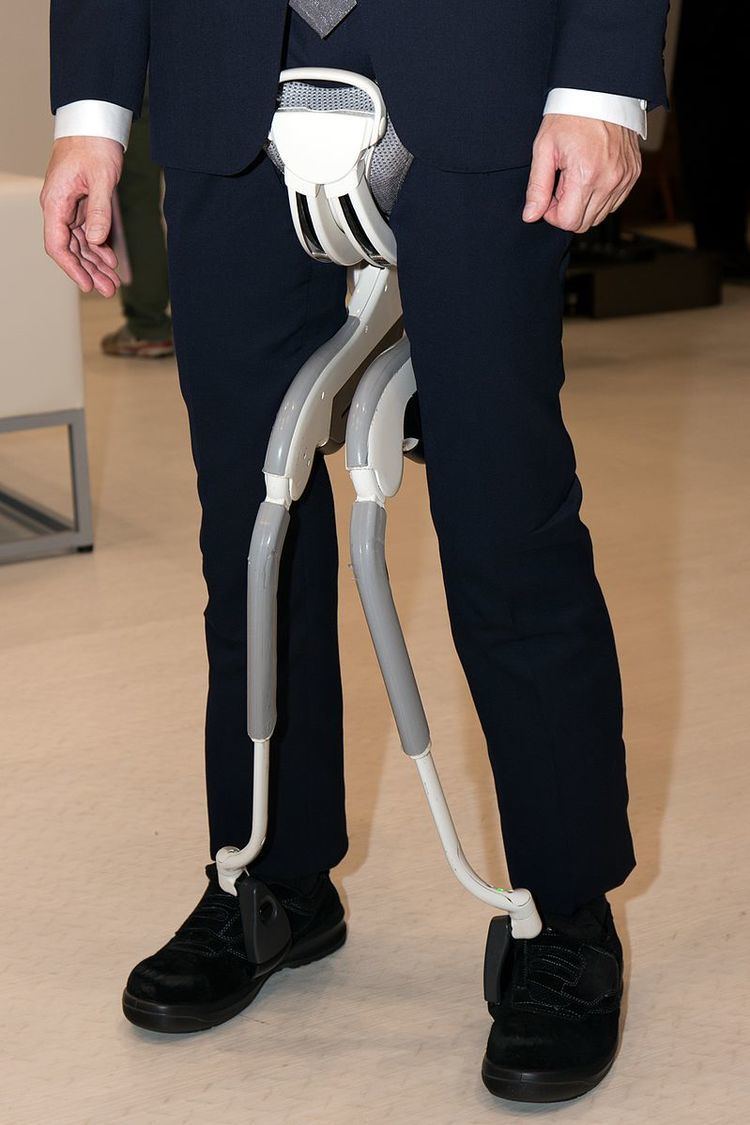 | ||
A robot leg (or robotic leg) is a mechanical leg that can be used to perform the same functions that a human leg can. The robotic leg is typically programmed to execute similar functions that a human leg would perform. A robotic leg is similar to a prosthetic leg; however, a robotic leg can be controlled electrically or mechanically. In order to have the robotic leg exhibit behaviors of a human’s leg, surgeons have to redirect the nerves that previously controlled some of the person’s lower-leg muscles in order to cause the thigh muscles to contract. Sensors are also embedded in the robotic leg to measure the electrical pulses that are created by both a re-innervated muscle contraction, and the existing thigh muscle.
Contents
Mechanism
A Robotic Leg is attached to an individual who has had a lower extremity amputee procedure done on them. A lower extremity amputee typically involves having a portion of the lower body (below the waist) amputated. The limb can either be a leg or a foot. Several measurements of the person’s prosthesis are made in order to design the best fit robotic leg. After the robotic leg is attached, sensors are then embedded in the robotic leg to measure the electrical activity that is created by both a re-innervated muscle contraction, and the existing thigh muscle.
Applications
Robotic legs have become more of a popular topic in research and development in the past few years. Robotic legs can be applied to people who have had limb amputating surgery caused by a major trauma, or a disease like cancer. Robotic legs have also seen much applicable use in military injuries caused in combat. Massachusetts Institute of Technology (MIT) has been working to create a “bionic” or robotic leg that will have the ability to function in the manner of an organic muscle.
